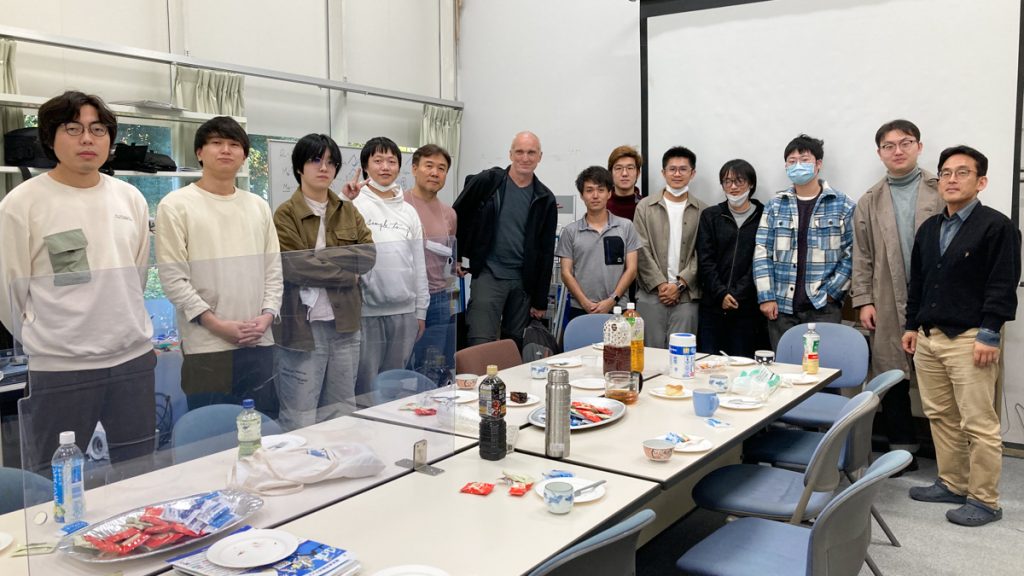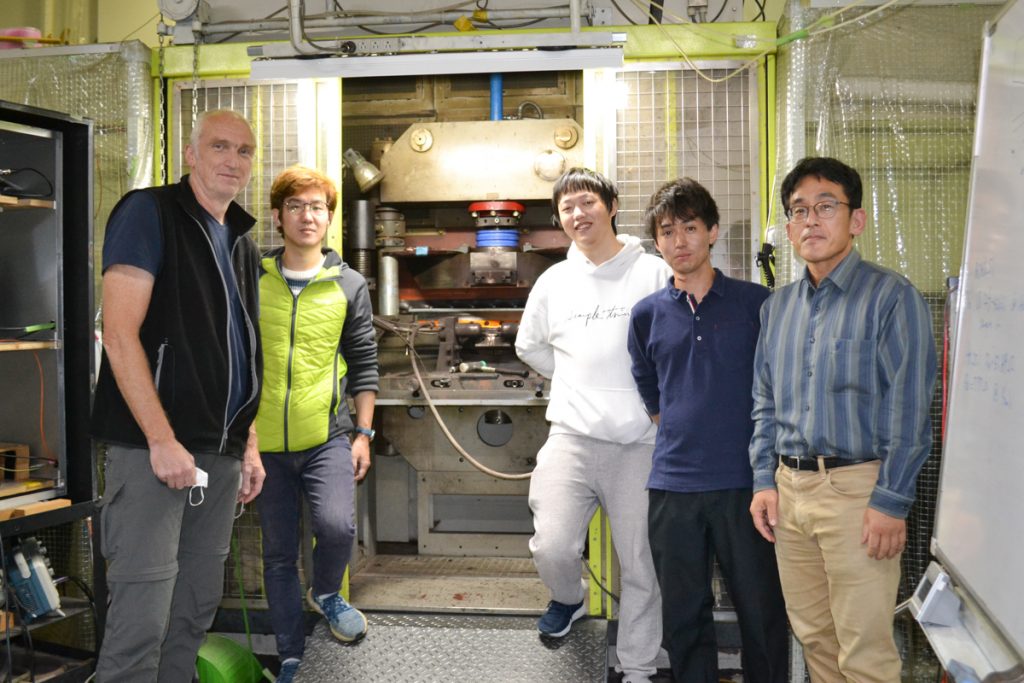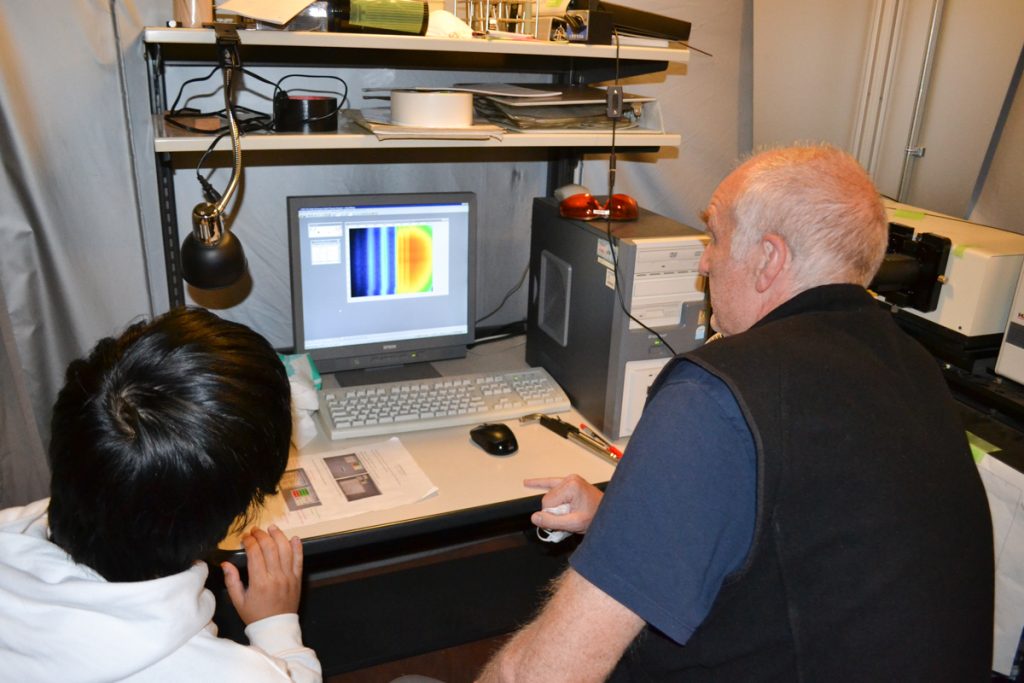ISSP stay report of Prof. Oliver Portugall
Oliver Portugall
CNRS-LNCMI, Toulouse, France
International collaboration is an important part of contemporary research that serves many purposes in parallel. At any time in history, the free circulation of knowledge among scientists has triggered creative processes and, on a more societal level, helped to overcome cultural differences. A more recent and more practical motivation is the emergence of research infrastructures for measurements under extreme conditions. As the implementation and operation of such infrastructures requires substantial investments, both their use and the necessary development effort should be shared to some extent. Megagauss magnetic fields and the current project are a good example. While the ISSP-IMGSL is the uncontested world-leader in this area, Megagauss fields are also part of the techniques proposed to European users by my home institution, the French National High Magnetic Field Laboratory (Laboratoire National des Champs Magnétiques Intenses, LNCMI). I have therefore been extremely elated by the suggestion to intensify our longstanding informal relationship and to share part of our development efforts and experience.

On a more personal note, the prospect to work at the ISSP has also triggered nostalgic feelings as I started my scientific career 30 years ago as a JSPS postdoctoral fellow in this institute. In Roppongi, where the ISSP was located at that time, I established many professional and private relationships that persist to this day, developed a profound affection for the Japanese culture and, most importantly, I learned how to work with single-turn coils. Immediately after returning to Germany I had the chance to put this experience into practice and set up the first European Megagauss installation in Berlin, an achievement, that finally brought me to Toulouse where I managed the pulsed field installations and technical staff of the LNCMI for the next 20 years. Retiring from this position in 2020 allowed me to boost the part-time Megagauss activity I had established in Toulouse, making it once more a full-time occupation. With the approval of the LNCMI and CNRS hierarchies, the new orientation of my activities also gave me the freedom to close the cycle and apply for a visiting professor position in the place where it all began …
Sentimental feelings notwithstanding, the principal motivation for my application was of course to collaborate on scientific-technical issues regarding single-turn coils. At present, only Kashiwa and Toulouse have the capacity to perform scientific experiments above 100 T on a regular basis using this type of equipment. Both laboratories also promote the use of their facilities by the international scientific community and therefore share two basic interests: firstly, to perform and advertise landmark experiments that prove the usefulness of Megagauss fields and thus help to attract new users; and secondly, to optimize existing, and implement new, measurement techniques that reliably produce high quality data. Both problems have been addressed during my stay.
As a potential landmark experiment, we have started to perform interband absorption measurements on organic semiconductors, whose precise electronic structure remains elusive despite a growing technological importance. The reason for this lack of understanding lies in the very nature of molecular crystals in which the electronic properties of molecules can generally be predicted and controlled much better than the subtle but important influence of crystalline interactions. Phenomenologically, organic semiconductors are characterized by heavy charge carrier masses and low mobilities which makes them a perfect target for measurements in the highest available magnetic fields. Our measurements on rubrene single crystals are currently evaluated and may give rise to further experiments using even higher fields obtained by electromagnetic flux compression.
In parallel with this scientific project, we have performed extensive tests to investigate ways to deal with electromagnetic perturbations that constitute the principal handicap for sensitive electrical measurements in Megagauss fields. Both Megagauss-compatible shieldings and the post-treatment of reproducible perturbations have been considered in this respect, and our plan is to pursue these investigations in both Kashiwa and Toulouse to pave the way for new experimental techniques such as electric transport measurements. As the latter project concerns practically any measurement involving Megagauss fields it has naturally been the subject of many discussions during my stay. In this respect, I want to thank all students and staff of the IMGSL for the open atmosphere and their willingness to share their results and practical experiences. I particularly enjoyed working with Dr. Xuguang ZHOU whose help was essential in all experiments and who made himself available whenever I needed him. His curiosity and the discussions issuing from his questions have triggered many interesting new thoughts. My principal thanks go of course to Prof. Yasuhiro MATSUDA for his implication in all stages and aspects of my visit, his warm welcome and my perfect integration in his group. I am very much looking forward to pursue and extend our collaboration, both on a bilateral level between our laboratories and by linking the Japanese and European high-field communities via EMFL, the European Magnetic Field Laboratory.
My thanks also go to the ISSP administrative staff and in particular Mrs. Yuko ISHIGUCHI for the smooth organization of my visit as well as some help in more private matters such as broken bicycles and new bank accounts. While the COVID-19 pandemic and repeated re-scheduling of my visit made everybody’s life more complicated, I always felt well instructed regarding the latest developments and I particularly appreciated the precise instructions to facilitate my immigration procedure right after the re-opening of the Japanese borders.
Last but not least, my thanks go to the ISSP governance and the University of Tokyo for implementing this exemplary visiting professor program and for making international collaboration a key issue of their policy. While I am writing these lines, my next visit to Kashiwa has already been scheduled and although I am not yet gone and our collaboration regarding Megagauss magnetic fields will continue in the meantime, I am already looking forward to another opportunity for intense discussions, exciting experiments and lots of fun.


